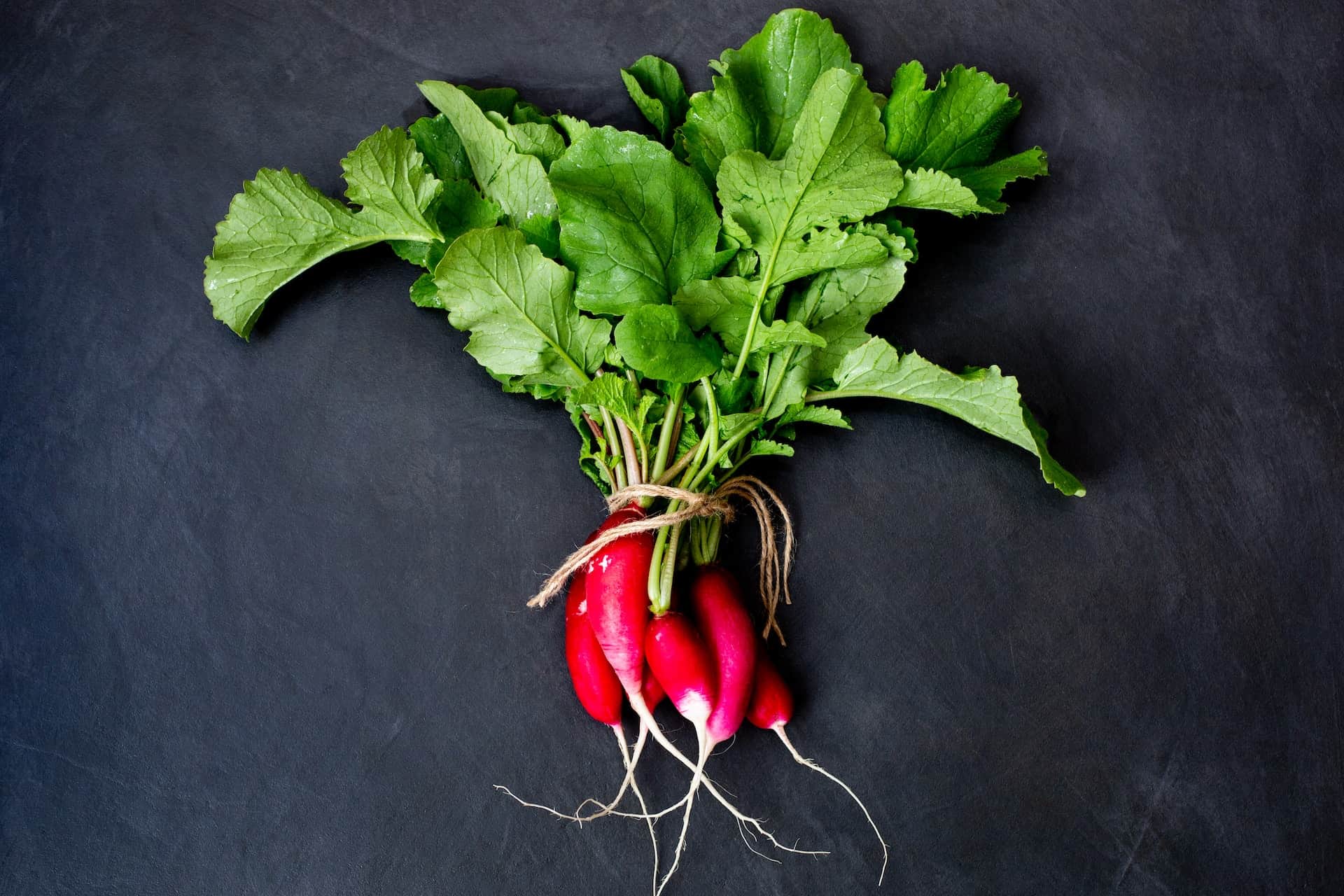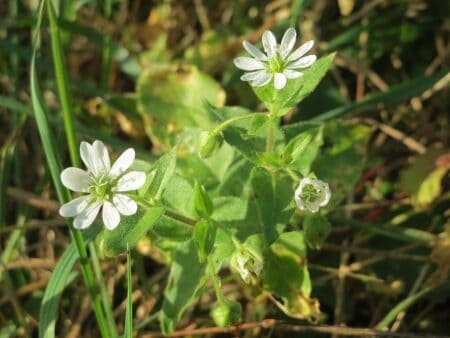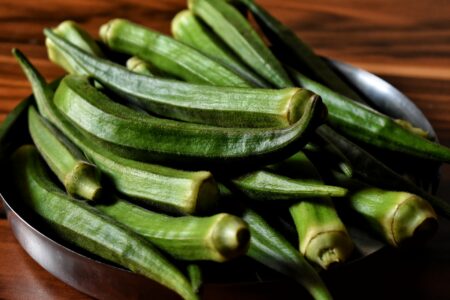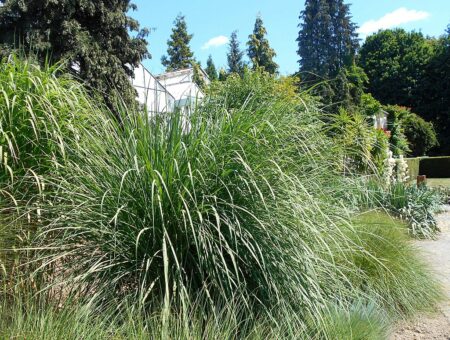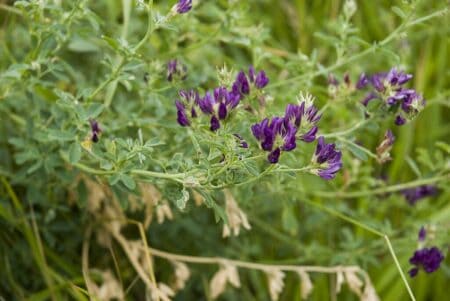Growing radishes is a great way to dip your toes into gardening.
Radishes are easy to grow, quick to harvest, and add a delicious crunch to salads and sandwiches.
This article will cover everything you need to know about growing radishes, from choosing the suitable variety to harvesting your crop. You’ll be surprised at how simple it is to produce fresh, flavorful radishes at home!
What Are Radishes?
If you’re a salad lover, you’ve probably already tasted this crunchy root vegetable.
Radishes are a part of the Brassicaceae family, which includes cabbage, broccoli, and cauliflower.
They come in different sizes and colors, from small red bulbs to large white ones. Some varieties have a spicy taste, while others are milder.
The great thing about radishes is that they’re easy to grow, even for beginners.
They grow quickly; you can harvest them in as little as three weeks. Plus, they contain nutrients like Vitamin C, folate, and potassium.
Radishes are versatile vegetables that can be enjoyed in many ways.
You can slice them up and add them to salads, sandwiches, and tacos for a refreshing crunch. You can also pickle, roast, or make radish chips.
Radishes can be eaten raw, roasted, pickled, or sautéed. The seeds of radishes can also be used to produce an oil commonly used in cooking and skincare products.
Choosing the Right Variety of Radishes
To grow a successful crop of radishes, choose a suitable variety.
There are several different types of radishes, each with specific characteristics.
Here are some factors to consider:
- Climate: Radishes prefer cooler temperatures, so if you live in a hot climate, select a heat-tolerant variety.
- Soil: Different varieties of radishes grow better in different soil types. Some prefer well-draining sandy soil, while others grow better in a loamy soil.
- Taste preference: Some radishes have a spicy flavor, while others are milder. Choose a variety that suits your taste preference.
Recommended varieties for beginners include the following:
- Cherry Belle: A classic red radish that is easy to grow and matures quickly.
- French Breakfast: A longer, thinner radish with a milder flavor and a unique red and white coloration.
- Watermelon: An enormous radish with a green exterior and pink interior with a sweeter taste.
- Black Spanish: A larger, black-skinned radish with a white interior that has a spicy flavor.
Sowing Radish Seeds
Now that you have chosen a suitable variety of radishes for your garden, it’s time to sow the seeds.
Here’s how to do it:
- Prepare the soil: Radishes prefer well-draining soil rich in organic matter. Loosen the soil to a depth of 6-8 inches (15-20 cm) and remove any rocks or debris.
- Add compost: Add a layer of compost or well-rotted manure to the soil and mix it in thoroughly. This will provide the necessary nutrients for the seeds to germinate and grow.
- Sow the seeds: Sow the seeds directly into the soil, about half an inch (1.25 cm) deep and one inch (2.5 cm) apart. Cover the seeds with soil and lightly water them.
- Water regularly: Radishes prefer consistent moisture, so water them regularly. Keep the soil moist but not waterlogged.
- Thin out the seedlings: Throwing them out to about two inches (5 cm) apart once they emerge. This will give them enough room to grow and develop.
- Fertilize: Fertilize the radishes with a balanced fertilizer once they reach a two-inch (5 cm) height.
Radish seeds usually germinate in three to five days, and you can expect to harvest them in as little as three weeks.
The following section will cover how to care for your radish plants to ensure a successful harvest.
How To Care For Radish?
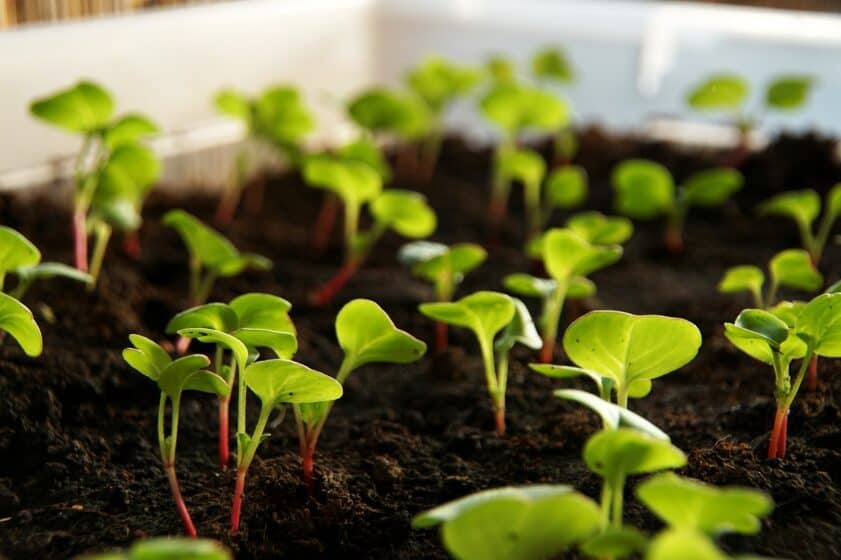
Caring for radish plants is relatively easy, and it involves the following aspects:
- Watering: As mentioned earlier, radishes prefer consistent moisture. Water them regularly to keep the soil moist but not waterlogged.
- Thinning: If you haven’t thinned out the seedlings yet, make sure to do so once they reach two inches in height. This will give them enough space to grow and develop.
- Fertilizing: Fertilize the radishes with a balanced fertilizer once they reach two inches (5 cm). This will help them grow faster and produce more roots.
- Weeding: Keep the area around the radish plants free of weeds. Weeds compete with plants for water and nutrients, hindering their growth.
- Pest control: Radishes are generally not prone to pest infestations, but pests like flea beetles or aphids can still attack them. If you notice any signs of infestation, treat them with an organic pesticide.
- Mulching: Applying a layer of mulch around the radish plants can help conserve moisture and keep the soil cool.
Harvesting Radishes
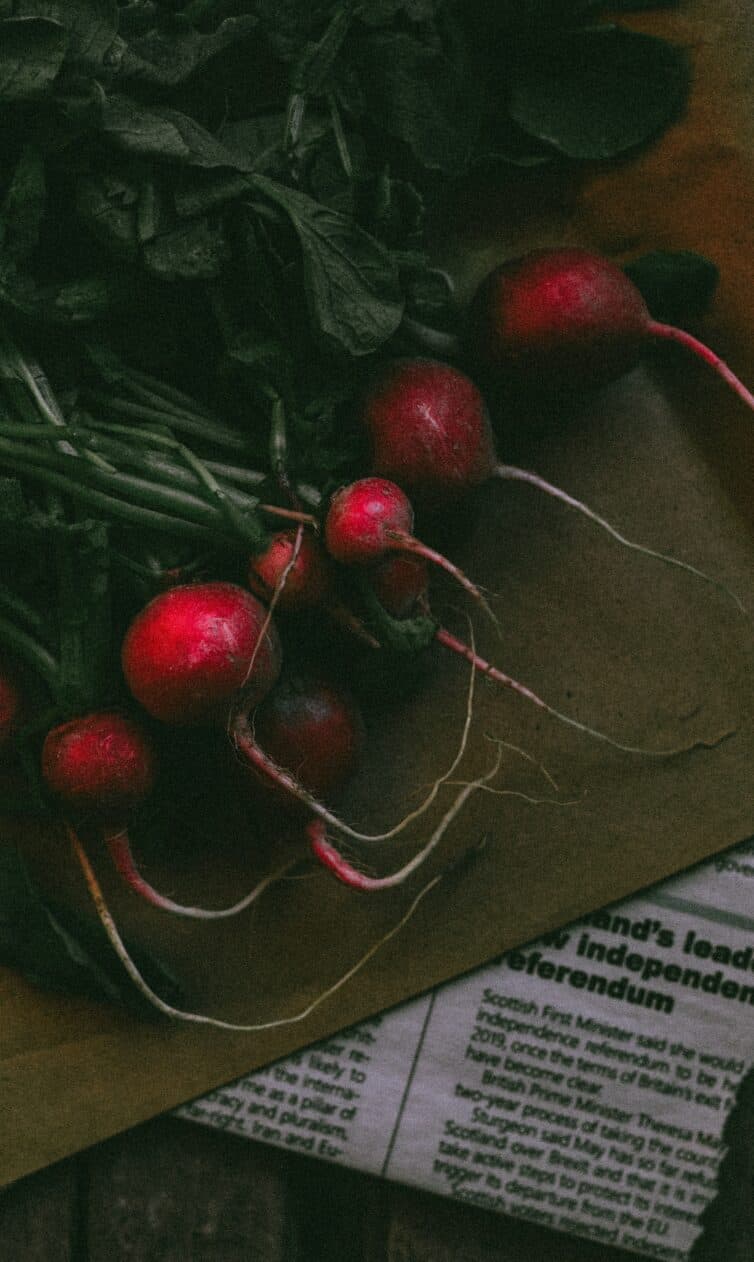
Harvesting radishes is the fun part! Most radish varieties take about 25-30 days to mature, although some can take up to 60 days.
Here’s how to harvest radishes.
Step #1: Check for Maturity
To check if your radishes are ready to harvest, gently brush away the soil around the base of the plant and check the root size.
If it’s about an inch (2.5 cm) in diameter, it’s ready to be harvested.
Step #2 Pull the Radish
Firmly grasp the radish at the base of the leaves and pull it out of the ground.
If the soil is dry, you may need to loosen it with a garden fork before pulling.
Step #3: Store Properly
After harvesting, remove the leaves from the radish and store them in the refrigerator.
Radishes can stay fresh for up to a week when stored properly.
Step #4: Repeat
Once you’ve harvested the radishes, you can repeat the process by planting more seeds.
Remember to harvest your radishes promptly, as they can quickly become tough and woody if left in the ground for too long.
Enjoy the fruits of your labor.
While the radish root is the most commonly consumed part of the plant, the greens are also edible and delicious. They have slightly bitter and peppery and can be used in salads, stir-fries, or soups.
Common Problems and Solutions
While growing radishes is relatively easy, a few common problems can arise.
Here are some common problems and solutions.
Poor Germination
If your radish seeds aren’t germinating, it could be due to too compact or too cold soil.
Make sure your soil is loose and friable, and if it’s too cold, wait until the soil warms up before planting.
Bolting
Bolting occurs when the radish plants go to seed before they’ve had a chance to produce a full-sized root.
This can be caused by high temperatures or planting seeds too late in the season.
Plant your radishes in the cooler months and ensure they get enough water to avoid bolting.
Pests
Radishes can be susceptible to flea beetles, root maggots, and cutworms.
To prevent infestations, use row covers or insecticides labeled for use on radishes.
Diseases
Radishes can also be susceptible to diseases like clubroot, damping-off, and powdery mildew.
To prevent disease, avoid planting radishes in too wet soil, and rotate your crops every year.
Conclusion
Growing radishes is as easy as pie. Choose your variety wisely, give your seeds a cozy spot to unwind, and shower your plants with love and care.
But wait, before you head to your garden, here’s a bonus tip: constantly water your radishes generously, as they thrive in moist soil.
With these tips, you’re on your way to growing the most delicious radishes in town!

